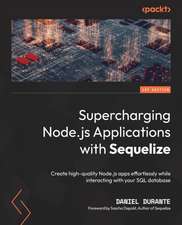The Tym Before ...
Autor Nathan Gregoryen Limba Engleză Paperback – 19 mar 2018
| Toate formatele și edițiile | Preț | Express |
|---|---|---|
| Paperback (1) | 165.73 lei 43-57 zile | |
| Lulu Press – 19 mar 2018 | 165.73 lei 43-57 zile | |
| Hardback (1) | 270.02 lei 22-36 zile | +39.29 lei 5-11 zile |
| Lulu Press – 16 mar 2018 | 270.02 lei 22-36 zile | +39.29 lei 5-11 zile |
Preț: 165.73 lei
Preț vechi: 207.17 lei
-20% Nou
Puncte Express: 249
Preț estimativ în valută:
31.71€ • 33.20$ • 26.24£
31.71€ • 33.20$ • 26.24£
Carte tipărită la comandă
Livrare economică 07-21 aprilie
Preluare comenzi: 021 569.72.76
Specificații
ISBN-13: 9781387824755
ISBN-10: 1387824759
Pagini: 480
Dimensiuni: 152 x 229 x 28 mm
Greutate: 0.77 kg
Editura: Lulu Press
ISBN-10: 1387824759
Pagini: 480
Dimensiuni: 152 x 229 x 28 mm
Greutate: 0.77 kg
Editura: Lulu Press
Notă biografică
Meanwhile, there arose many commercial entities jockeying for a piece of the existing network pie. They called themselves ISPs, but the acronym was not the same as we know today. It stood for IP Services Providers, and they were looking to use Internet technologies to cannibalize the many dedicated corporate networks, as well as the pre-existing commercial public packet-switched networks with a less expensive alternative. Chief among these was UUNET, founded in 1987. They profoundly disliked ANS! They considered ANS a threat to the openness of the Internet. There was a joke at the time that said "The only thing missing from ANS is U" which appeared on a popular T-shirt at Interop Spring 1992. Debate raged about who was going to "own" the Internet when the NSF turned off the government-funded backbone. The IP Services Providers began carrying traffic by interconnecting. From this debate emerged an independent entity beyond the control of the NSF, an interconnection point called MAE-East. This collection of scrappy upstart ISPs united for the formation of MAE-East and drove the creation of the long-haul Commercial Internet backbone with MFS Datanet. From there, the Commercial Internet developed and grew, and became the Internet we know today. The book "Securing the Network" tells the story of how this happened and the roles of people who made it happen. Learn the forgotten side of Internet history. Buy "Securing the Network" today!
























